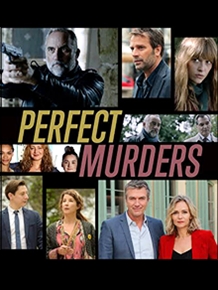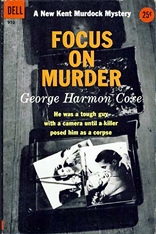Mon 7 Jul 2025
A Movie Review by Jonathan Lewis: THE SOUND OF FURY (1950).
Posted by Steve under Crime Films , Reviews[4] Comments
THE SOUND OF FURY. United Artists, 1950. Frank Lovejoy, Kathleen Ryan, Richard Carlson, Lloyd Bridges, Katherine Locke, Adele Jergens. Director: Cyril Endfield.

There’s a lot going on in The Sound of Fury (also released as Try and Get Me!), a film adapted by screenwriter Jo Pagano from his novel, The Condemned (1947), which itself was based on real life kidnapping case which ended in a public lynching. Directed by Cy Endfield (Zulu), the movie begins with a street preacher passionately bellowing about something. I forget what exactly, but it probably had something to do with repenting.

Which would make sense given the themes of the film; namely, crime, guilt and punishment. Indeed, one can argue that those themes permeate this film noir from beginning to end, with each main character’s arc reflecting these thematic aspects (or lack thereof) throughout the overall narrative.
The story is as follows. Down and out Howard Tyler (Frank Lovejoy) has moved from Boston to California in search of a better life for himself and his growing family. Things are, to put it mildly, not going well financially for him. A chance meeting with low-level criminal Jerry Slocum (Lloyd Bridges) in a bowling alley changes things dramatically. Initially, the two knock off gas stations and the like. But then they move onto kidnapping and murder, choosing the son of a wealthy citizen as their target.
It doesn’t take long for guilt to overcome Tyler, who believes he is being watched by God. Slocum, on the other hand, doesn’t seem to have much remorse. The contrast between the guilt-ridden Tyler and his sociopathic accomplice couldn’t be more pronounced. Even after the men are captured by law enforcement, the divide between the two criminals remains poignant.

At the same time that all this is happening, local news columnist Gil Stanton (Richard Carlson) is using his position to incite rage against the two suspects. His vitriol is so strong that even the local sheriff worries that Tyler and Slocum might not get a fair trial. As it turns out, he’s right.
This is where the movie shifts tonally from film noir territory to a morality play about the rights of the accused, mob violence, and the like. It’s a notable departure from the gritty first half of the film and is, in my opinion, less effective. Grating at times, even.

That said, where the movie goes next is a return to film noir. There’s a harrowing scene of a mob storming the courthouse, freeing the two men, and then dragging them out into the street for a lynching. When that happens, it is Stanton’s chance to feel guilt. He rightfully recognizes how his overwrought yellow journalism columns contributed to this act of mob justice.

Overall, I appreciated this film and particularly liked Lovejoy’s transformation from model citizen to accessory to murder. I’ have always believed he has been underappreciated as an actor. Here, he’s great as an everyman who gets in way over his head. The cinematography by Guy Roe (Armored Car Robbery) is standard noir fare. Nothing spectacular, but solid enough.
Recommended, but with the caveat that not everyone will appreciate the morality play aspect of the film, particularly given how notable a departure it is from the film’s beginning.

















